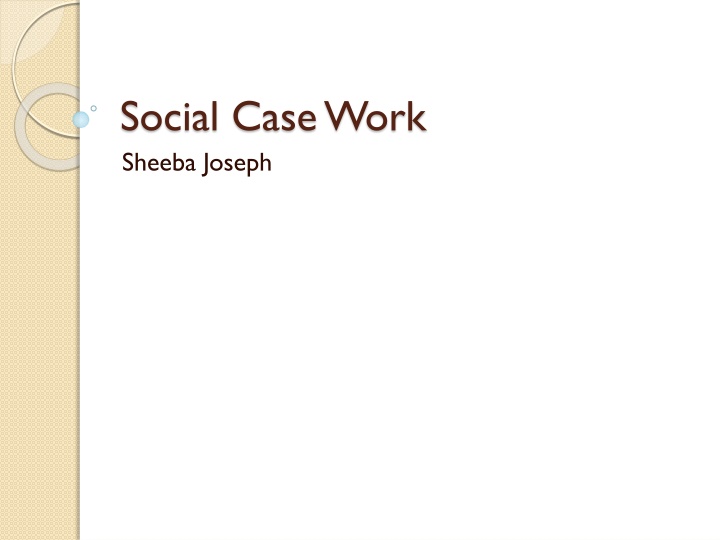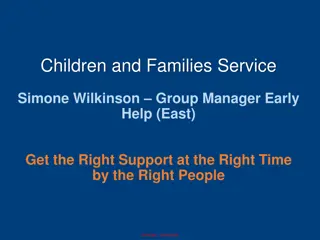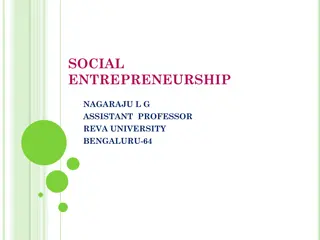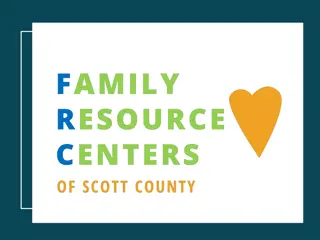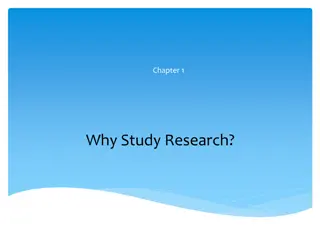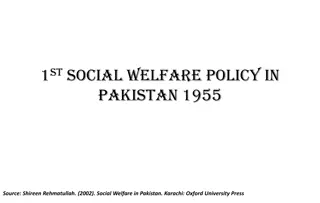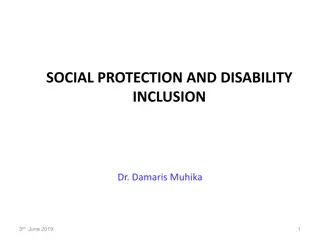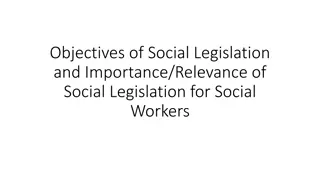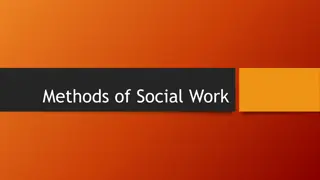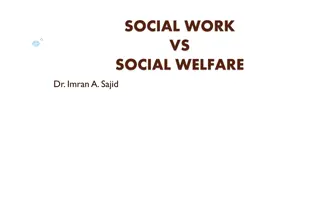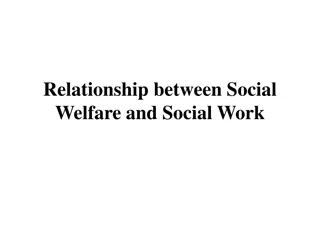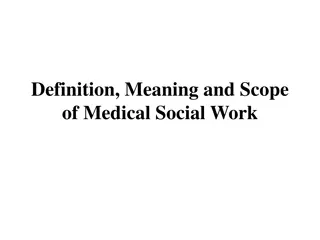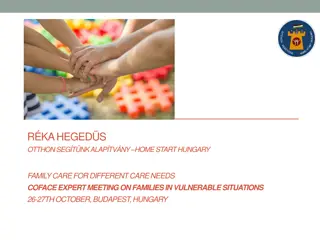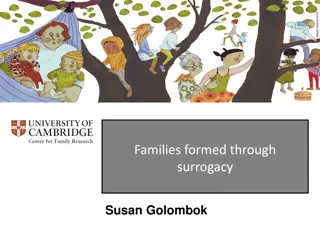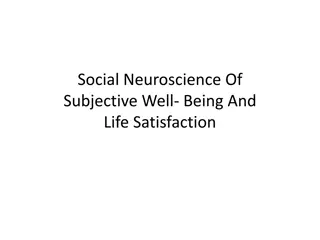Types of Social Issues Faced by Individuals and Families
Within the realm of social case work, various problems arise that impact individuals and families, such as illness, disability, lack of resources, school-related issues, institutionalization challenges, behavioral issues, marital discord, and more. Understanding and addressing these issues is crucial for providing effective support and services in social work practice.
Download Presentation

Please find below an Image/Link to download the presentation.
The content on the website is provided AS IS for your information and personal use only. It may not be sold, licensed, or shared on other websites without obtaining consent from the author.If you encounter any issues during the download, it is possible that the publisher has removed the file from their server.
You are allowed to download the files provided on this website for personal or commercial use, subject to the condition that they are used lawfully. All files are the property of their respective owners.
The content on the website is provided AS IS for your information and personal use only. It may not be sold, licensed, or shared on other websites without obtaining consent from the author.
E N D
Presentation Transcript
Social Case Work Sheeba Joseph
Types of Problems faced by individual & families Problems related to illness or Disability Problems due to lack of material resources School related problems Problems related to institutionalization Behavioral Problems Problems of marital discord Problems situations needing a follow-up service Needs related to rehabilitation Difficulties of client caught up with social problems
School related Problems Behavior problems in schools Frequent absence from school or truancy Conduct that disturbs the academic atmosphere of the classroom or of a generally withdrawn or non-communicative disposition. Poor academic performance Dropping out of school before completing the requirements of any certificate.
Problems related to institutionalization Juveniles in conflict with law Children who are in need of care and protection. Eg: Susheela- Runaway girl Salim who lost his father & not knowing the reality. longingly waiting to meet him. Remarriage or separate
Behaviour Problems Telling lies, changing entries in the mark sheets issued by school Stealing Rude & abusive talk Disobedience & defiance of authority Running away from school, home & residential institution Aggressive Behaviour Bed-wetting
Problems of marital discord Alcoholism Extra-marital r/s of husband or wife Unemployment of husband Marital problems can emerge as an associated problem.
Situation needing follow-up services Sponsored children problems. Rehabilitation of adults & children discharged from correctional institutions. Eg: Judy (Father died & mother abandoned her)
Needs related to rehabilitation of persons with disabilities Problems of rehabilitation Eg: John-Carpentry Renu-Visual impairment
Predicaments & difficulties of victims of social problems Gambling Prostitution Unmarried motherhood Alcoholism Drug addiction
Social case Work Mary Ellen Richmond (1861 1928) (1915) Social Case work may be defined as the art of doing different things for and with different. people by cooperating wit them to achieve at one and the same time their own and society's betterment. Mary Richmond (1917) Social case work is the art of bringing about better adjustments in the social relationship of individual men or women or children
Contn.. Helen Harris Perlman Perlman(1957) SCW is a process by certain human welfare agencies to help individuals to cope more effectively with their problems in social functioning .
Contn.. Queen (1922) SCW is an art of adjusting personal relationship . Richmond (1917) Art of bringing about better adjustment in the social relationship of individual men, women or children .
Hollis (1954) SCW is a method employed by social workers to help individuals to find solution for problems of social adjustment which they are unable to handle in a satisfactory way by their own efforts
Objectives Revolves around the internal well-being of an individual Establish proper equilibrium b/w man & his environment. Different psycho-social approach
Objectives To help the client to solve the inter- personal as well as intra-personal problems. To strengthen the Ego To find the causal factors distorting man- society r/s & to eradicate it. To enhance the social functioning.
Relationship- Social & Professional Society is a web of social relationship. From birth to death. Basis Social Relationship Professional Relationship Duration Open-ended Ends when the problem is solved Limited to a problem Time Not limited Place Home, club Office or institution Focus Mutual Satisfaction Problem solving Role relation Mutual Helper and Helped
Contn.. R/s is an emotional bond between people who interact with each other. Perlman (1957) it is a condition in which two persons with some common interest between them, long-term or temporary, interact with feelings. Biestek (1957) The dynamic interactions of attitudes and emotions.
Characteristics of Relationship Purpose & Concern for the client system Expectations Empathy & Clear communication Genuineness and acceptance Authority
Values Every man has inherent worth & dignity Individual has the right of self determination Every individual is the primary concern of of society , has potential for and the right to growth Every individual in turn has to contribute to the society s development. The individual and society in which one lives are interdependent.
Assumptions Man is a bio-psycho-social being who is in constant interaction with his environment. All the problems in social functioning are psycho-social in nature and most are interpersonal as well. Within certain limits, man can be understood and helped Man can grow and change limited only by his inherent capacities and potentials Every person is unique as well as similar to others.
Principles of Social Case Work Biestek Principle of individualization Purposeful expression of feelings Controlled emotional involvement Acceptance Non-Judgemental Attitude Client self-determination Confidentiality
Principles of Social Case work Biestek 1. Individualization Recognition and understanding of each clients unique qualities. Differential use of principles Based on the right of human beings to be individuals To be treated as individuals with personal differences
Principles of Social Case work 2. Purposeful expression of feelings Recognition of the client s need to express his feeling s freely Listens purposefully Neither encouraging nor discouraging Actively stimulating and encouraging them for therapeutic work.
Principles of Social Case work 3. Controlled emotional involvement Case worker s sensitivity to the client s feelings Understanding of their meaning and purposeful, appropriate response to client s feelings 4. Acceptance Accepting the client as he or she is Strength and weakness Congenial and uncongenial qualities Positive and negative attitudes Purpose is therapeutic
Principles of Social Case work Non- Judgemental Attitude Quality of case work relationship Based on the conviction that CW excludes assigning guilt or innocence. Degree of client responsibility for causation of the problems or needs Doesn t include making evaluative judgements about their attitudes,standards or action of the client.
Principles of Social Case work Client self determination Practical recognition of the right and need of the clients freedom in making their own choice and decisions in the case work process. Duty to respect that right, recognize that need stimulate and activate potential for self direction to see and use the available resources . Enhance the skill in constructive decision making
Principles of Social Case work Confidentiality Preservation of secret information concerning
BASIC ASSUMPTIONS OF SOCIAL CASE WORK: Man is a bio-psycho-social being who is in constant interaction with his environment. All problems in social functioning are psycho- social in nature and most are interpersonal as well. Within certain limits, man can be understood and helped. Man can grow and change limited only by his inherent capacities and potentials. Every person is unique as well as similar to others.
HISTORICAL DEVELOPMENT OF SOCIAL CASE WORK: Ancient times individuals in every society have been helped by others to solve their problems. Late 19th and early 20th century it took professional shape 1869 Origin of Charity Organization Society in London. The main aim of the society was to find out ways and means of helping the poor and needy and thus to organize used volunteers , called friendly visitors .
They visited the homes of the poor for the purpose of assessing their need, for rendering material assistance and for giving them guidance and advice. These friendly visitors were subsequently called paid agents . These paid helpers gradually developed systematic procedures in performing their tasks; they collected data, helped them after assessing and also maintained records (personal data, type of help rendered). Case work gradually developed into a professional method.
1877 Organized efforts were taken by the American Charity Organization Society in U.S.A., similar to that in London. The paid agents received training in investigation, diagnosis and treatment for which the New York School of Philanthropy was established towards the end of the 19th century. 1895 End of 19th century in England, a concept called Almoners (outside visitors) was introduced. Sir Charles Loch appointed Almoners to help hospitals to serve patients effectively. Almoners were similar to friendly visitors and paid agents.
1898 The first School of Social Work was established in New York. 1911 Case work had emerged in USA as an accepted formal technique. Since the early social workers handled cases of families in need, they were called caseworkers in USA.
1914 1917 The first training programme for casework started at this time, based more on the medical model Summer training started by many schools of social work recognized by professionals. 1917 Mary Richmond wrote her first book called Social Diagnosis which set forth a methodology of helping clients through systematic ways of assessing their problems and handling them. The book
1920s - Various definitions of case work under the influence of Freudian theory (internal factors individual responsible for his problems).caseworkers realized that ore responsibilities should be given to individuals to make decisions of their life. Professionals also began to move into other fields like prisons, schools, etc.
also introduced the principle of individualization and client s right to self-determination. Impact of I World War The First World War made a wide impact on social case work. Psychiatry in this period became more important. The contribution of Freud and his followers influenced the method employed by the caseworkers in dealing with the individuals. CGC movement and treatment, prevention of mental problems and delinquency strengthened the psychological orientation of this approach.
1950s This was an era of private practice. Professional agencies started growing in this field. Case work started going into the community. Richmond (1922), Hamilton (1951) and Pearlman (1957) also emphasized on the problems of social functioning. 1960s Lot of importance was given to research and social action. Heredity vs. environment casework method adopted new techniques and principles.
1930 Economic depression Case workers had to consider the economic factors which were causing distress to clients, leading to emotional distress and breakdown. Focus shifted from individual to modification and manipulation of the client s environment to enable him to adapt to his situations satisfactorily. After World War II, with the problems of morale, leadership, propaganda, separation, communication, etc., social workers found social sciences more useful. There was increase in personal problems on the part of clients due to financial crises.
Social Case work in India: - American case work had its influence in India, as the first professional social workers who did case work in the Indian setting were trained in the American Schools of Social work. 1911 N.M. Joshi, one of the founders of the Trade Union Movement established an organization called the Social Service League. The League conducted training programmes foe volunteers, whose services were later utilized for relief work among people suffering form famines, epidemics, floods and other disasters, and also for welfare programmes among the poor and the destitute.
1936 - The Sir Dorabji Tata Graduate School of Social Work was started in Bombay, the training for social work changed into a full time career oriented, educational programme. 1946 Case work figured, both as a theoretical course and also as a method of practice in the academic programme. Social work as a profession and as an academic programme has been enlarged and enriched by new perspective, ideas and theories.
Home Visits Importance of family- Mental health field Study of emotional, social and physical aspects of family life is necessary to plan the treatment process. Mental Hygeine Movement(1959) recommended that home visits should be used for diagnostic purposes, as well as treatment & supervision of long-term patients in their own homes.
Purpose of home visits Getting detailed information about the client and his family Medical & Psychiatric setting it is often impossible for psychiatrist & psychologist to obtain an adequate picture of the family background by interviewing the child,parents and other concerned in the clinic. Cameron (1961)-in a few mins at home a experienced observer can gain more pertinent information about the patient and his environment.
Contn.. Problems relationships of the child & the relevance of family interaction to this problem Personality characteristics of the parents and siblings & studying the patterns of intra-familial, inter personal relationships. Socio-economic status of the family and the pattern of interaction with the external world.
Contn.. Persuading the parents to utilize the services to the maximum extent. Educating the family members in matters of health and illness and for allaying anxiety of relatives Strengthen ties between the client in the institution and family(Pre-release home visits) Facilitating rehabilitation of the discharged clients from the institution. Family therapy & aftercare services to the discharged patients
Home visits are useful in the treatment of.. Emotional problems of children & adolescents Habit disorders and conduct disorders in childhood & adolescence Educational Problems Delinquency and other behavioral disorders in children Social maladjustment Psychoneuroses Difficulties in family adjustment
Referral Before termination the cases are referred to another case worker or therapist.. Helping process does not end but it s the contact with a particular case worker which terminates. Done on various considerations: When a different type of therapy/worker is required Difficult to move New responsibility Lack of required services
Contn.. Referral note.. Brief summary of the problems and the fforts undertaken to solve the problem along with psycho-social diagnosis PREPARATION Explaining the reasons for referral Talking of the +ve & -ve feelings for referral. Separation anxiety in one or two sessions Handling the questions factually Preparing the client for new contact
Interviewing Communicating with a conscious purpose Kahn & Connell (1957) As a specialised pattern of verbal interaction initiated for a specific purpose, focused on specific content area, with consequent elimination of extraneous material.
Contn.. Social Caseworker s interviews differ from non-therapeutic interviews in terms of techniques, self-awareness, professional norms therapeutic commitments and objectives, agency s purpose, policies and the specific roles. and values,
Four aspects identified for successful helping interviews Individual honesty Empathy Non-possessive warmth Unconditional acceptance Interview passes through 3 stages: Initial ,Middle & Termination
Initial Phase Establishing Relationship Initial- often fraught with anxiety Lack of clarity about expectations , responsibilities and purpose Some steps should be taken to create an ambience
